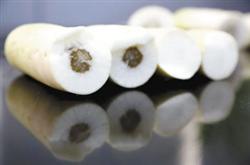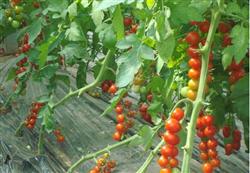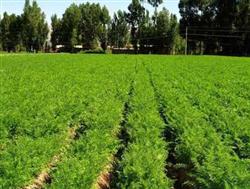There are three fears in growing radish

Afraid of hard soil. Radish is a vegetable that likes soft and hard. In addition to the continuous cropping soil of cruciferous vegetables, the cultivated soil also requires deep soil, soft soil and convenient drainage and irrigation, so that the radish will have good quality and high yield. I'm afraid that fertilization is unreasonable. Radish likes heavy base fertilizer and less topdressing. Base fertilizer is generally 65 kilograms per 667 square meters with rapeseed cake, 50 kilograms of plant ash and 20 kilograms of calcium superphosphate. After application, it is turned into the soil surface, and then 250 kilograms of human feces are poured into the soil surface every 667 square meters. Turn the soil after drying, so that it can be fully mixed and evenly mixed with the soil surface before sowing. Afraid of drought. If the water supply is insufficient, the radish fleshy root skin is thick, the meat is hard, the spicy taste increases, and the yield is low. The field where radish is planted is required to be moist before sowing. In case of dry weather, early-maturing varieties can generally be irrigated once before sowing, shallow irrigation, and then sow after the topsoil is dry. After sowing, some straw is properly covered to prevent excessive evaporation of water. Radish seedlings need less water, if the border soil is not too dry, do not need watering, fleshy roots begin to expand and strong, until 4-5 days before harvest, radish should be supplied with more sufficient water, so that the soil to maintain 70%-80% moisture. Watering is usually carried out in the morning or evening. In times of drought, water is watered every 1-2 days.
- Prev

Planting and Management of Cherry Tomato in Spring
As a variety of tomato, cherry tomato is more and more welcomed by consumers. In order to achieve the goal of high yield when cherry tomato is planted in spring, it is necessary to do a good job of planting and management. 1. The planting time of cherry tomato in spring cultivation is generally arranged in February to March, and there is no seed in 3 years.
- Next

Cultivate carrots in early spring
Select suitable varieties to select spring sowing varieties with bolting resistance, short growth period, heat resistance in later stage, good appearance and internal quality, neat root shape, few abnormal roots and high yield, such as Heida Wucun and Chunshijin introduced from abroad. Domestic varieties such as Hongxin No. 5 and Chunhong No. 1. Select new seeds of the carrot seed genus.
Related
- Where is it suitable to grow horseradish in China? it is expected to see the middle altitude horseradish in Alishan.
- How to prevent tomato virus disease reasonably? (Control methods included)
- Many people like to plant towel gourd on the balcony. What are the main points of this method and management?
- What crops can chili peppers be mixed with?
- Fertilization techniques and matters needing attention in Tomato
- What are the grafting techniques for peach seedlings in spring?
- Harm and control methods of root swelling disease of Chinese cabbage
- What are the pests of sweet potatoes? How to prevent and cure it?
- Symptoms, causes and Control methods of navel Rot in Tomato
- The cause of "Cucumber rotten bibcock" in Farmers' planting Cucumber and its Control Plan

